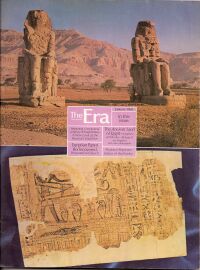
FAIR is a non-profit organization dedicated to providing well-documented answers to criticisms of the doctrine, practice, and history of The Church of Jesus Christ of Latter-day Saints.
mNo edit summary |
|||
| Line 75: | Line 75: | ||
* Another copy of Book of the Dead. | * Another copy of Book of the Dead. | ||
|| | || | ||
* Only known from characters copied into the Kirtland Egyptian Papers | * Only known from characters copied into the [[Book_of_Abraham/Joseph_Smith_Papyri/Kirtland_Egyptian_Papers|Kirtland Egyptian Papers]]. | ||
|} | |} | ||
| Answers portal |
| The Book of Abraham |
 |
|
FAQ:
Book of Abraham content: Production: |
|
Where did the papyri related to the Book of Abraham come from?
In July 1835, Joseph Smith purchased a portion of a collection of papyri and mummies that had been discovered in Egypt and brought to the United States. Believing that one of the papyrus rolls contained, "the writings of Abraham while he was in Egypt," and "purportedly written by his own hand, upon papyrus,"[1] Joseph commenced a translation. The Book of Abraham was the result of his work.
The translated text and facsimiles of three drawings were published in the early 1840s in serial fashion in the LDS newspaper Times and Seasons. The entire work was published in 1852 in England as part of The Pearl of Great Price, which was later canonized as part of LDS scripture.
After Joseph's death, the collection was eventually sold and split up. The original papyri were thought to have been completely destroyed in the Chicago fire of 1871. Fragments, however, including the illustration represented in Facsimile 1, were discovered in 1966 in the Metropolitan Museum of Art in New York City, who gave them to The Church of Jesus Christ of Latter-day Saints in November 1967.
There are eleven fragments of the original papyrus owned by Joseph Smith. The initial labels given the fragments came from Hugh Nibley's work.
The fragments that exist and their source are described in the table below, as are other materials of interest to students of the Book of Abraham:
| Fragments | Source | Comments |
|---|---|---|
|
|
|
|
|
|
|
|
|
|
|
|
|
|
|

FAIR is a non-profit organization dedicated to providing well-documented answers to criticisms of the doctrine, practice, and history of The Church of Jesus Christ of Latter-day Saints.
We are a volunteer organization. We invite you to give back.
Donate Now